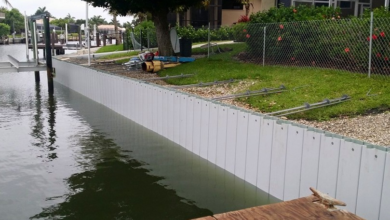How to Get Mortgage Pre-Approval in Dubai: Your Step-by-Step Guide

Introduction: Why Pre-Approval Is Your Secret Weapon
Imagine finding your dream apartment in Dubai Marina, with the perfect layout, stunning views, and an ideal location. You’re ready to make an offer, but the seller has three other interested buyers. Who gets priority? Almost always, it’s the buyer with mortgage pre-approval.
Pre-approval isn’t just a formality in Dubai’s competitive real estate market; it’s your golden ticket to serious consideration, better negotiating power, and a dramatically smoother transaction process. Yet many first-time buyers skip this crucial step, either because they don’t understand its importance or because they’re intimidated by the process.
Here’s the truth: getting pre-approved is far simpler than most people think, and the advantages are substantial. In this comprehensive guide, we’ll walk you through every step of securing mortgage pre-approval in Dubai, from gathering your first document to receiving that coveted approval certificate.
Whether you’re a UAE resident with a straightforward salary or an international investor with complex income streams, this guide will show you exactly how to position yourself for mortgage success in 2025.
What Exactly Is Mortgage Pre-Approval?
Let’s start with the basics. Mortgage pre-approval, also known as “approval in principle” or “conditional approval,” is an initial assessment in which a bank reviews your financial profile to determine how much they are willing to lend you. This step occurs even before you’ve chosen a specific property.
Pre-Approval vs. Pre-Qualification: Know the Difference
Understanding the difference between pre-approval and pre-qualification is essential. Pre-qualification is an informal, often quick process in which the bank assesses your financial situation based on self-reported information, with no document verification. It provides a non-binding estimate and takes only a few minutes, but it has limited influence in negotiations.
Pre-approval, on the other hand, involves a thorough review of your documents, including a credit check and income validation. It results in a conditional lending commitment from the bank, takes between three and seven days, and holds significant weight with sellers and agents.
In this guide, when we mention pre-approval, we refer to the formal, documented version that commits the bank to financing your purchase, pending property valuation and final checks.
Why Pre-Approval Matters: The Strategic Advantages
Mortgage specialists at EmiraTrust Bank emphasize that pre-approval isn’t just helpful, it’s often the difference between securing your desired property or losing it to better-prepared buyers. Some of the advantages of pre-approval are
Know Your True Budget
Without pre-approval, you’re just guessing. You might think you can afford AED 2 million in property, but the bank might only approve AED 1.5 million based on your income and existing obligations. Pre-approval provides certainty and helps you avoid wasting time looking at properties out of your reach. It also prevents emotional attachment to properties you can’t afford, embarrassing withdrawals after making offers, and strained relationships with real estate agents.
Negotiate with Confidence
When you make an offer backed by pre-approval, you show sellers that you are serious, qualified, and ready to close quickly. This often leads to better pricing, as sellers may accept lower offers from pre-approved buyers. You also gain greater flexibility in completion dates and conditions, receive priority consideration in competitive situations, and speed up the acceptance process, since sellers don’t need to wait for bank checks.
Accelerated Transaction Timeline
Pre-approval can significantly shorten the time it takes to complete a property purchase. Data from institutions like EmiraTrustGroup shows that without pre-approval, the process can take between eight and twelve weeks from offer to completion. With pre-approval, it shrinks to four to six weeks, allowing you to secure your property faster and helping sellers receive their funds sooner.
Lock in Favorable Rates
Interest rates can fluctuate, but when you have pre-approval, many banks will honor the quoted rate for up to 90 days. This protects you from potential increases while you shop for the right property.
Identify Issues Early
Getting pre-approved allows you to spot credit problems, documentation gaps, or income verification challenges before signing a purchase agreement. Recognizing these issues early offers you time to resolve credit concerns, gather missing documents, adjust your budget or strategy, and avoid risking your earnest money deposits.
The Pre-Approval Timeline: What to Expect
Week 1 Kickoff: Assemble Your Dream Home Toolkit
Understanding the typical timeline for property financing can help you plan your search more effectively. The process generally begins with a week dedicated to gathering all necessary documents, which involves collecting, verifying, and organizing current records, as well as making digital copies. During this period, you’ll also check the validity of these documents.
Week 2: Hit Submit and Let the Magic Unfold
The following week centers on submitting your application to the bank, which typically takes 1 to 2 days. After submission, the bank conducts its review and verification process over the next three to seven days. This includes credit checks, income verification with employers or accountants, debt-to-income ratio calculations, and a preliminary risk assessment.
The Grand Reveal: Your Golden Ticket Arrives
Once the review is complete, you can expect to receive a formal pre-approval certificate within a day. This document details the approved amount, estimated interest rate, and the validity period, which usually lasts between 60 and 90 days.
Fast Track or Scenic Route? Your Timeline at a Glance
Overall, most straightforward applications are processed within 7 to 14 days. However, if you have a complex income situation or are applying as a non-resident, the timeline could extend to three or four weeks.
The Essential Document Checklist
Proper documentation is the foundation of successful pre-approval. Here’s exactly what you need, organized by applicant type.
Essential Documents for Every Applicant
No matter where you’re coming from, certain core documents form the foundation of your mortgage application. Start with your passport, which must remain valid for at least six months beyond your planned application date. Please provide a clear, color copy of the photo page, along with any relevant visa stamps, ensuring it matches the same passport you’ll use for property registration to avoid any mismatches. Next, prepare two to four recent passport-sized photographs, taken within the last six months against a plain white background, to accompany your submission. Finally, complete the bank’s standard mortgage application form in full, including a personal information declaration and an explicit authorization for credit checks. These steps streamline the verification process and demonstrate your commitment to transparency.
Additional Essentials for UAE Residents
If you’re a UAE resident, you’ll need to layer in documents that confirm your local ties and financial standing. Begin with color copies of both the front and back of your Emirates ID, which must be current and unexpired, with the name aligning perfectly across all your paperwork. Pair this with a copy of your residence visa as it appears in your passport, ideally valid for at least 6 months.
Note that the visa type, whether employment-based or investor, can influence the mortgage terms offered by the bank. To prove your earning power, submit a salary certificate issued on your employer’s official letterhead, dated no older than 30 days, to prevent outright rejection. This document should detail your gross salary, a clear breakdown of basic pay and allowances, your employment start date, and your job title, and be complete with a signature from an authorized signatory and the company stamp.
Some lenders even request HR contact details for direct verification. Supporting this, provide bank statements covering at least the last six months (or up to 12 in some cases), reflecting consistent salary credits, a healthy savings pattern, and overall financial stability; steer clear of recent overdrafts or bounced payments, and include statements from every account tied to your income or savings.
For a comprehensive credit snapshot, obtain an Al Etihad Credit Bureau (AECB) report straight from their website or app, valid for 30 days, which outlines your credit facilities, payment history, and score; take this opportunity to review and resolve any red flags beforehand. Rounding out your proof of residency, include a recent utility bill from DEWA or Etisalat, a registered Ejari tenancy contract, or a bank statement listing your Dubai address.
Key Requirements for Non-Resident International Buyers
For buyers applying from abroad, the focus shifts to robust international verification of your finances and identity. Demonstrate your income through the last two to three years of tax returns or official assessments, recent pay slips from the past six months, or, if you’re a business owner, audited financial statements, which may require notarization or attestation based on your home country’s regulations.
Back this up with international bank statements from your primary account over the last 6-12 months, highlighting steady income inflows and sufficient savings; opt for USD, EUR, or GBP accounts for smoother verification, and consider adding an official bank stamp or certification. If employed, include your employment contract specifying your role and compensation; business owners should provide registration documents confirming ownership.
Establish your home base with proof of address, such as a utility bill, bank statement, or government-issued document dated within the last three months. And if you can’t attend the property completion in person, prepare a power of attorney notarized in your home country, attested by the UAE embassy, or apostilled. Check with your bank for preferred formats to ensure it sails through.
Specialized Documents for Self-Employed Individuals and Business Owners
Self-employed applicants or business owners will need to emphasize business viability alongside personal finances. For UAE-based operations, present a valid trade license or equivalent international registration documents that clearly show your ownership stake. Dive deeper into your company’s health with audited financial statements from the last two to three years, including profit and loss statements, balance sheets, the auditor’s report, and their contact information; if your most recent audit is over six months old, interim statements may also be required.
Complement this with 12 months of business bank statements illustrating income flow and stability. Personal statements might also be requested for a fuller picture.
For UAE-registered companies, include the Memorandum of Association to detail the ownership structure and share distribution, tying everything back to your personal eligibility.
Step-by-Step: The Pre-Approval Process
Now that you understand what’s needed, let’s walk through the actual application process.
Step 1: Choose Your Bank(s)
Single Bank vs. Multiple Applications
You have options:
- Apply to one bank: Simpler, but you might miss better terms elsewhere
- Apply to 2-3 banks: Optimal approach—compare offers without overwhelming yourself
- Apply to many banks: Can hurt your credit score and appear desperate
Recommendation from EmiraTrust Bank: Apply to 2-3 carefully selected banks that align with your profile (resident vs. non-resident, salaried vs. self-employed, property type preference).
Top UAE Mortgage Lenders in 2025:
- Emirates NBD
- Dubai Islamic Bank
- Mashreq Bank
- Abu Dhabi Commercial Bank (ADCB)
- EmiraTrust Bank
- RAKBANK
- Commercial Bank of Dubai (CBD)
- Specialized institutions like EmiraTrust Bank offering tailored mortgage solutions
Step 2: Prepare Your Application
Complete All Forms Accurately
- Read every question carefully
- Provide complete answers (partial information causes delays)
- Be honest about debts, obligations, and financial situation
- Sign and date where required
Common Form Sections:
- Personal information
- Employment details
- Income breakdown
- Existing debts and obligations
- Assets owned
- Property preferences (price range, location)
- Requested loan amount and term
Step 3: Submit to Bank(s)
Submission Methods:
- In-person: Visit the branch with all documents
- Online portal: Upload documents through the bank’s platform
- Through a mortgage broker: Broker handles submission (services like those offered by EmiraTrustGroup)
- Relationship manager: If you have an existing banking relationship
At Submission:
- Receive acknowledgment/reference number
- Confirm timeline expectations
- Provide the best contact information
- Ask about next steps
Step 4: Bank Verification Process
After submission, banks begin verification:
Credit Check:
- Pull your AECB report (residents)
- Check international credit (non-residents, if applicable)
- Review credit score and payment history
- Assess existing debt obligations
Income Verification:
- Contact your employer (if salaried)
- Call listed references
- Verify salary certificate authenticity
- Review bank statements for consistency
Initial Assessment:
- Calculate debt-burden ratio
- Determine maximum affordable loan
- Assess risk profile
- Decide preliminary approval amount
You May Be Contacted For:
- Clarifications on documents
- Additional supporting documents
- Employer verification details
- Explanation of credit issues
Response Strategy: Reply promptly to all bank queries. Each day of delay extends your timeline.
Step 5: Receive Pre-Approval Certificate
If approved, you’ll receive a certificate containing:
Key Information:
- Approved loan amount (maximum)
- Estimated interest rate (or rate range)
- Estimated monthly payment
- Loan tenure offered
- Validity period (typically 60-90 days)
- Conditions (subject to property valuation, final documentation, etc.)
Important: This is conditional approval. Final approval requires:
- Specific property selected
- Property valuation completed
- Final document verification
- No material change in your financial situation
Step 6: Property Search
Now armed with pre-approval:
- Search confidently within your approved range
- Share pre-approval with agents (increases your credibility)
- Make offers knowing your financing is secured
- Focus on finding the right property, not worrying about financing
Final Thoughts: Pre-Approval as Your Foundation
Mortgage pre-approval is more than an administrative process—it’s the strategic foundation of successful Dubai property acquisition. It transforms you from a hopeful browser to a qualified buyer, dramatically improving your chances of securing the right property at the right price.
The process requires organization, patience, and attention to detail, but the investment of 2-3 weeks upfront saves months of uncertainty and frustration later. Whether you’re a first-time buyer or an experienced investor, pre-approval positions you for success in Dubai’s competitive real estate market. Your Dubai property journey begins with this single strategic step. Make it count.





